Confession (1937)
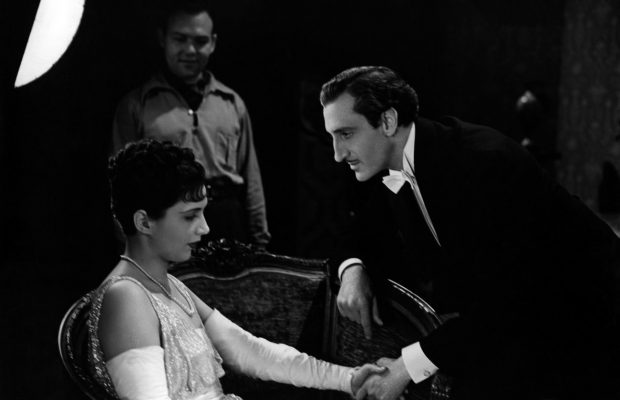
Toronto Film Society presented Confession (1937) on Sunday, November 25, 2018 in a double bill with Nob Hill as part of the Season 71 Sunday Afternoon Film Buffs Series, Programme 3.
Production Company: Warner Brothers. Producers: Hal. B. Wallis and Jack Warner (both uncredited). Director: Joe May. Screenplay: Hans Rameau. English adaptation by Julius J. Epstein and Margaret P. Levino. Cinematography: Sidney Hickox. Release Date: August 28, 1937.
Cast: Kay Francis (Vera Kowalska), Ian Hunter (Leonide Kirow), Basil Rathbone (Michael Michailow), Jane Bryan (Lisa Koslov), Donald Crisp (Presiding Judge), Mary Maguire (Hildegard), Dorothy Peterson (Mrs. Koslov), Laura Hope Crews (Stella), Robert Barrat (Prosecuting Attorney), Ben Welden (Defense Attorney), Veda Ann Borg (Xenia), Joan Valerie (Wanda).
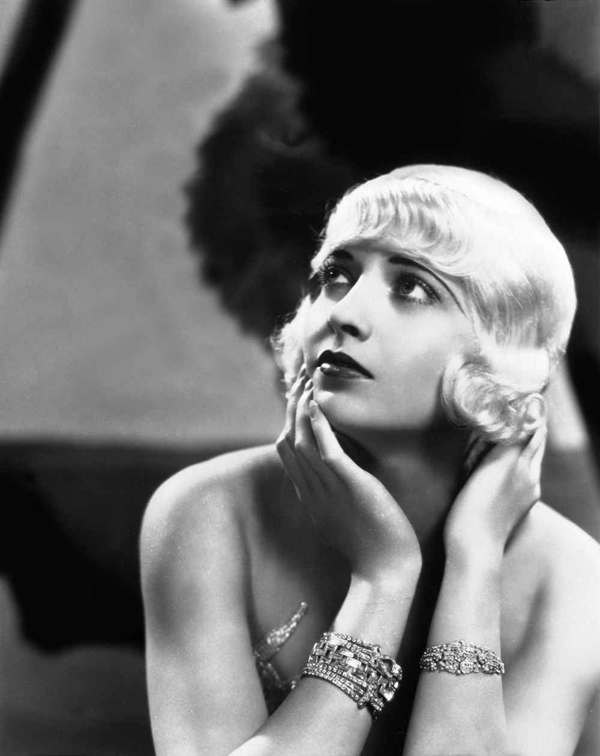
Once Warner Brothers saw the German film Mazurka made in 1935 with Pola Negri, the studio decided to make the film itself and bought up all the American rights to ensure that it wouldn’t be shown in America. For their 1937 version, Warners reteamed for their third time Kay Francis and Fredric March, but by the time filming began, March was committed to David Selznick and was replaced by Basil Rathbone. William Dieterle (Deterly) was originally slated to direct the film but was replaced by German director Joe May, while Anita Louise was usurped (You-zurped) by Jane Bryan to play Kay’s daughter. Mazurka was retitled One Hour of Romance, then finally changed to Confession just prior to its release.
TFS patron, the late William K. Everson, wrote in Films in Review: The plot…pre-dates Citizen Kane in its narrative structure…it is almost impossible to understand fully all of the plot ramifications at one sitting…Kay Francis, perhaps piqued by the knowledge that Bette Davis had turned the property down, professed not to like it at all, and reported that May was impossible and tyrannical to work with…. Kay Francis is surprisingly good. For once it’s a role for an actress rather than a personality, and she does well with it…Joe May believed in what he was doing and didn’t feel superior to its tear-jerker category. Confession is one of the very best and most handsomely mounted genre films…a needed reminder of the German influence on Hollywood.
May’s precision direction was not easy on the cast. He was so fond of the 1935 film, that he used a stopwatch to ensure that each scene ran exactly as long as the original. He drove the cast crazy, and with Kay, who usually got along well with her directors, sparred openly on the set. One argument centered on a line of dialogue where Kay thought the line should be “I won’t”, while May insisted it should be “I can’t.” When Kay explained that there was little difference between the two lines, May insulted her by telling her it was “the difference between you and a good actress.” More than once during the making of the film Kay stormed off the set. But in the end, Variety thought Kay’s haunting portrait was one of her best performances, commenting, “Confession is a finely produced vehicle for Kay Francis, and a picture that is likely to put her forward in favor as a dramatic actress…Responsibility for the commercial career of the picture is tossed right into Miss Francis’ lap. Despite some very fine supporting acting, the picture is hers. It is her most important production in several years and is ideal material for any dramatic star.”
Joe May remade Mazurka, using the original score and songs with the soprano lines dubbed by singer Hilde Seipp. And just as Pola Negri sang in the original, Kay Francis did her own singing in the remake.
It’s interesting for me to note Bill Everson’s comment above. I watched Confession about three or four years ago and there’s a scene that, at that time, left me wondering if I understood completely what had happened. Perhaps it will be clearer on this viewing, but if not, perhaps it’s left unclear due to the censorship laws of the time. It’s the scene where Kay is led up to a spare bedroom in Rathbone’s home. I realize that during the Golden Age of Hollywood that women were perfectly coifed even after giving birth, but I’m not sure if I understood or not what really happened; if Kay truly was compromised, whether she was only made to believe she was, or she knew she wasn’t, but no matter, the end results would be the same. And then I wondered who else in the story would know if in fact she had been compromised. But regardless, whether it is clear or not, this is a film that I’m sure you’ll all enjoy.
Sourced from Kay Francis: A Passionate Life and Career by Lynn Kear and John Rossman (2006); Kay Francis: I Can’t Wait to be Forgotten by Scott O’Brien (2007)
Introduction by Caren Feldman
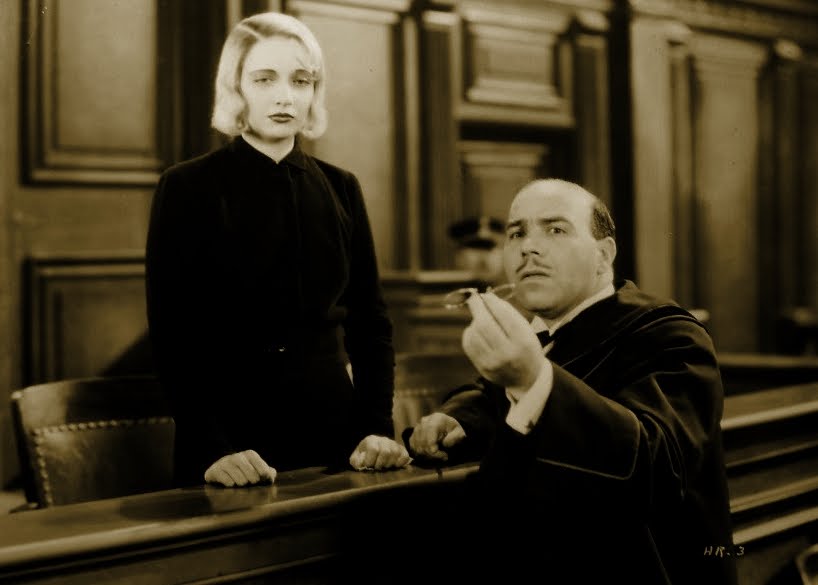
Plot: It’s 1930 in a European metropolis. Lisa Koslov, a young, innocent woman, is a student of the piano at the city’s music conservatory. She is without her mother for a few days for the first time in her life; her mother, out of town on family business, to whom she cannot turn at this time for advice in dealing with the advances of an older man who she will learn is the famed composer, conductor, and pianist Michael Michailow. Despite not feeling that spending time with Michael is the right thing, she is unable to fend off his advances, which he is able to manipulate to his advantage. Lisa is on a night out at a cabaret with Michael when the cabaret’s aging singer, Vera Kowalska, spots Lisa and Michael in the audience; Vera, who shoots Michael dead before he and Lisa can leave. At Vera’s murder trial, where Lisa is among the eyewitnesses testifying for the prosecution, Vera readily admits that she shot Michael, but will not talk otherwise to defend herself by providing justifying reasons for having done so. The film is an exact copy in every respect of the 1935 German film Mazurka, directed by Willi Forst and starring Pola Negri.
Joe May (1880-1954): Born Joseph Otto Mandel in Vienna, he began as a stage director of operettas in Hamburg and took his stage name from his wife, the actress Mia May. His film career began in 1912 with a popular series of detective films modelled on Sherlock Holmes, for Continental Film Studios. He then formed his own studio under his own name, continuing with crime and detective films, and gave Fritz Lang early work as a screenwriter on several of his films. After World War I, he produced a series of often lengthy exotic adventure films, including The Indian Tomb (1921), starring Conrad Veidt and written by Fritz Lang and Thea von Harbou (and remade in 1959 when Lang returned to Germany after his years in the USA). May then moved into more realistic films, including one of his finest films, Asphalt (1929), after which he directed, in the early years of sound, a series of multilingual films in Germany, Austria, and France, before moving—like Fritz Lang, Billy Wilder, Robert Siodmak and others—to the United States to escape the Nazis. He then worked for Universal Films, mostly on B-movies, with some exceptions, such as Two Hearts in Waltz Time (1934), Confession (1937), The House of the Seven Gables (1940), and The Invisible Man Returns (1940). His last film was Johnny Doesn’t Live Here Anymore (1944), a comedy featuring Robert Mitchum in a small role, after which he retired as a director.
Kay Francis (1905-1968): Born in Oklahoma City, she was raised on the theatrical circuit by her mother with only intermittent periods of schooling before enrolling in a secretarial school in New York and then deciding on a theatrical career. She made her Broadway début in 1925 in a modern dress version of Hamlet. After this, she joined an itinerant theatre company before returning to Broadway in 1927, where she was successful in the play Crime. After she appeared with Walter Huston in the play Elmer the Great, in 1928, Huston encouraged her to take a screen test and she was hired by Paramount, where she made The Cocoanuts with the Marx Brothers, in 1929. By then, major studios and their stars were moving to California to make sound films, and Francis joined the exodus, signing a contract with Paramount and making an immediate impression, appearing in 21 films between 1929 and 1931. She then joined Warner Brothers, who promised her star status and a better salary, though she returned to Paramount to make Ernst Lubitsch’s Trouble in Paradise, in 1932. Back with Warners, she was given more sympathetic roles than before. Over the next few years, she was the queen of the Warners lot and one of the highest paid actors in the business, receiving more publicity than any other performer, with the exception of Shirley Temple, though few of her films were lasting masterpieces and the productions were often more notable for lavish sets and costumes than anything else. She finally became tired of this and began to demand better roles, which led instead to inferior roles and the termination of her contract in 1939. In 1938, she had been dubbed “box office poison” by The Hollywood Reporter, along with Greta Garbo, Joan Crawford, Katharine Hepburn, Fred Astaire, Mae West, and others. She was unable to obtain another studio contract and was reduced mainly to character and supporting roles. During World War II, she did volunteer work and appeared in a popular film called Four Jills in a Jeep in 1944, but was unable afterwards to resume a major film career and had to resort to working for “Poverty Row” studios, such as Monogram, and returning to the stage before retiring from show business. In 1966, she was diagnosed with breast cancer and died in 1968 at the age of 63.
Basil Rathbone (1892-1967): Born of English parents in South Africa, but the family were forced to flee to Britain when he was three years old, after being accused during the Boer War of being English spies. He was educated in England, where he discovered an interest in theatre and, despite his father’s disapproval, joined a Shakespeare company in Stratford-on-Avon and began to appear on the stage in London and on tour in the United States. Called up for the army in 1915, he rose to the rank of captain and was awarded the Military Cross for “conspicuous daring and resource on patrol”, though he was profoundly affected by the death of his brother in action. He returned to acting after the War, with well received performances in Britain and several appearances on Broadway.
He began his film career in 1925, and played the role of detective Philo Vance in The Bishop Murder Case, in 1930. In the 1930s, he appeared as a suave villain in such films as David Copperfield, Anna Karenina, Captain Blood, A Tale of Two Cities, The Adventures of Robin Hood, and The Mark of Zorro, but came to be most widely recognised as Sherlock Holmes in two Fox films and then twelve features for Universal, between 1941 and 1944, with Nigel Bruce as Dr. Watson. Originally set in the late-Victorian period of the original books, they widened into more contemporary themes, and were supported by a concurrent radio series. Though this role tended to typecast him, he also appeared in such films as We‘re No Angels, in 1955, with Humphrey Bogart, and John Ford’s The Last Hurrah, in 1958, as well as horror films and parodies, such as The Tower of London and The Comedy of Terrors. He made numerous well-received appearances on Broadway and, later, television, but there mostly in cheap, second-rate thrillers and comedies. Other activities included readings on radio and CD, and touring with a one-man show. He was twice married and died suddenly, of a heart attack, in 1975.
Ian Hunter (1900-1975): He was born in South Africa and spent most of his childhood there before the family returned to live in England. After joining the army to serve in World War I, he followed up an interest in acting. After a short trip to Broadway, he met Alfred Hitchcock in England and appeared in his The Ring and Downhill (both in 1927) and Easy Virtue (1928), after which he returned first to Broadway and then to Hollywood and RKO. He worked regularly in both Britain and Hollywood afterwards, and made nearly thirty films for Warner Brothers in the 1930s, including A Midsummer Night’s Dream (1935), The Adventures of Robin Hood (1938), and seven films with Kay Francis. He then worked in Hollywood for various other studios before returning to Britain in 1942 to serve in the War. Back in the U.S. afterwards, he worked both in the theatre and in film before retiring in the mid-1960s, after having made nearly a hundred films.
Jane Bryan (1918-2009): She was interested in theatre from an early age and signed with Warners, where she appeared in several of their best films of the 1930s, such as Marked Woman (1937), Kid Galahad (1937), A Slight Case of Murder (1938), and The Old Maid (1939), becoming a close friend of Bette Davis rather than the rival that some in the studio had expected. She retired from film after her marriage and became heavily involved in Republican politics as a close friend and supporter of Ronald Reagan.
Notes by Graham Petrie

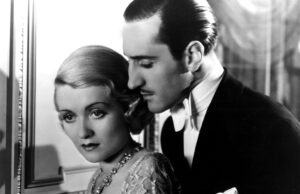
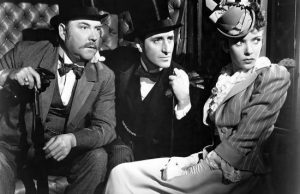
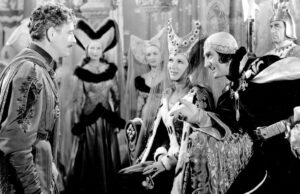






Leave a Reply